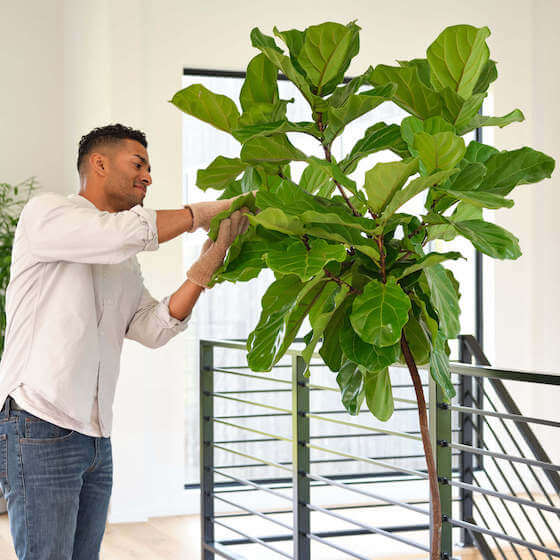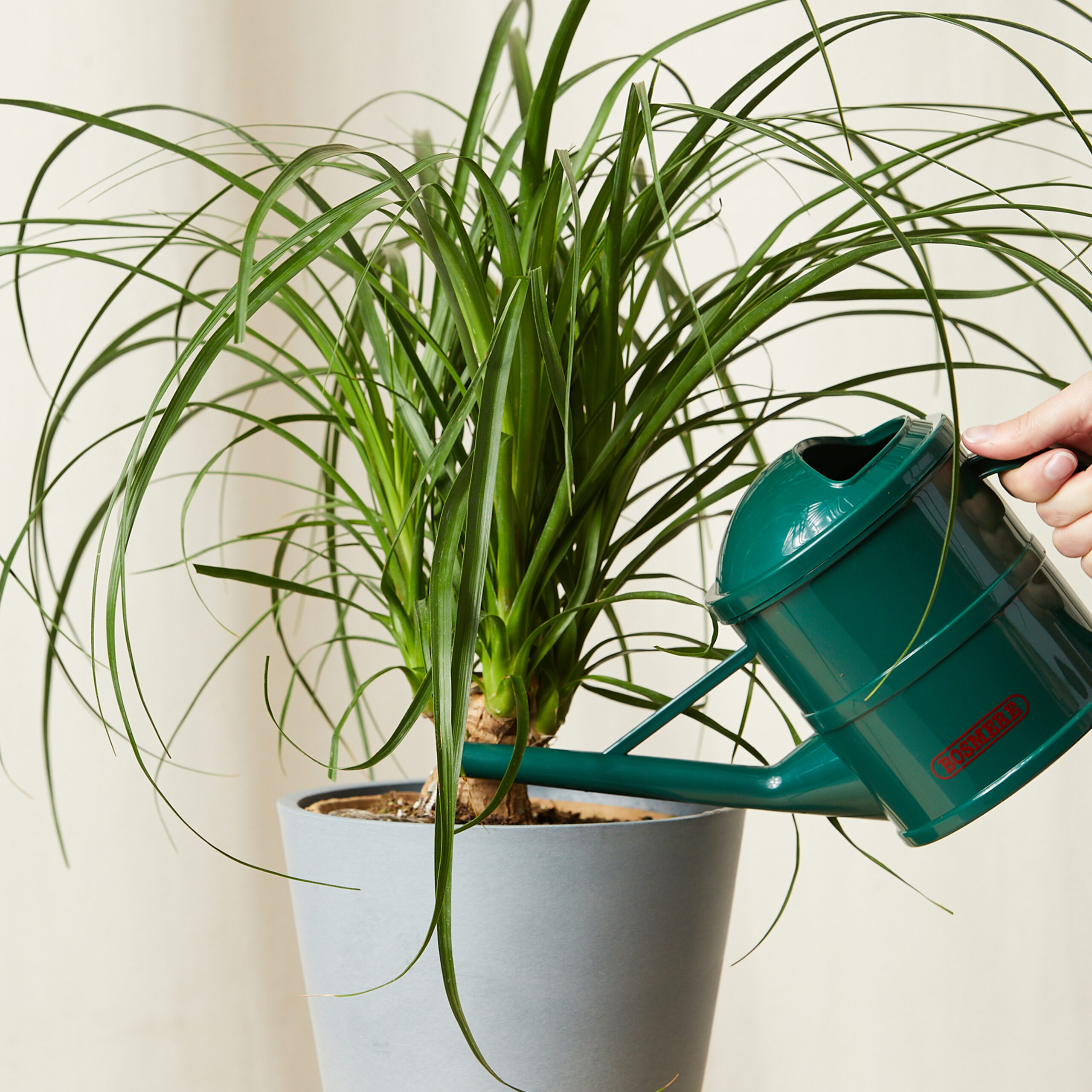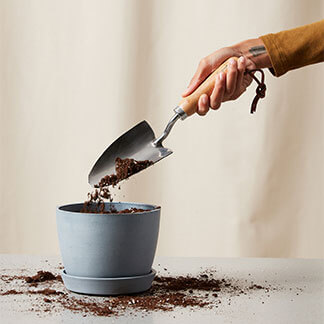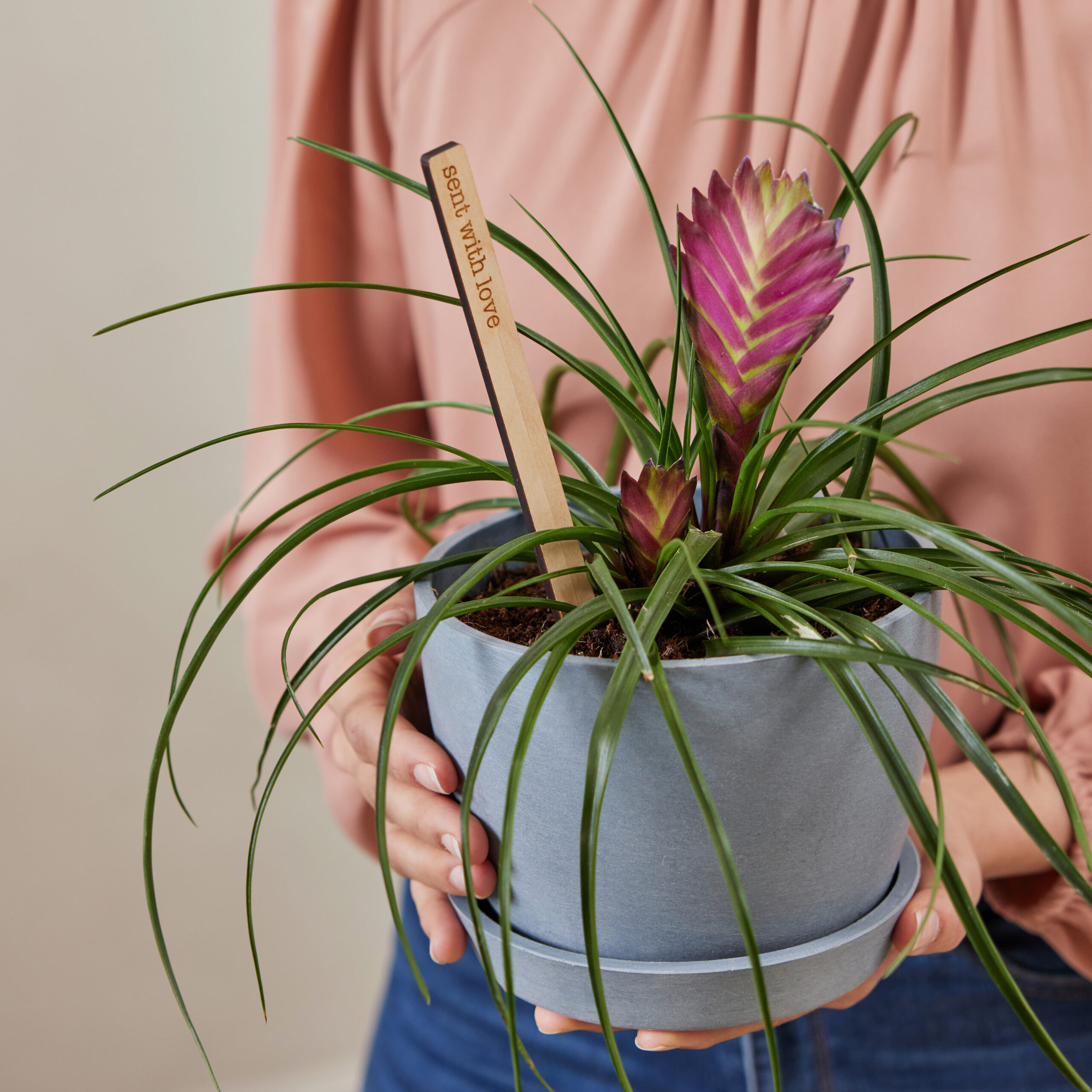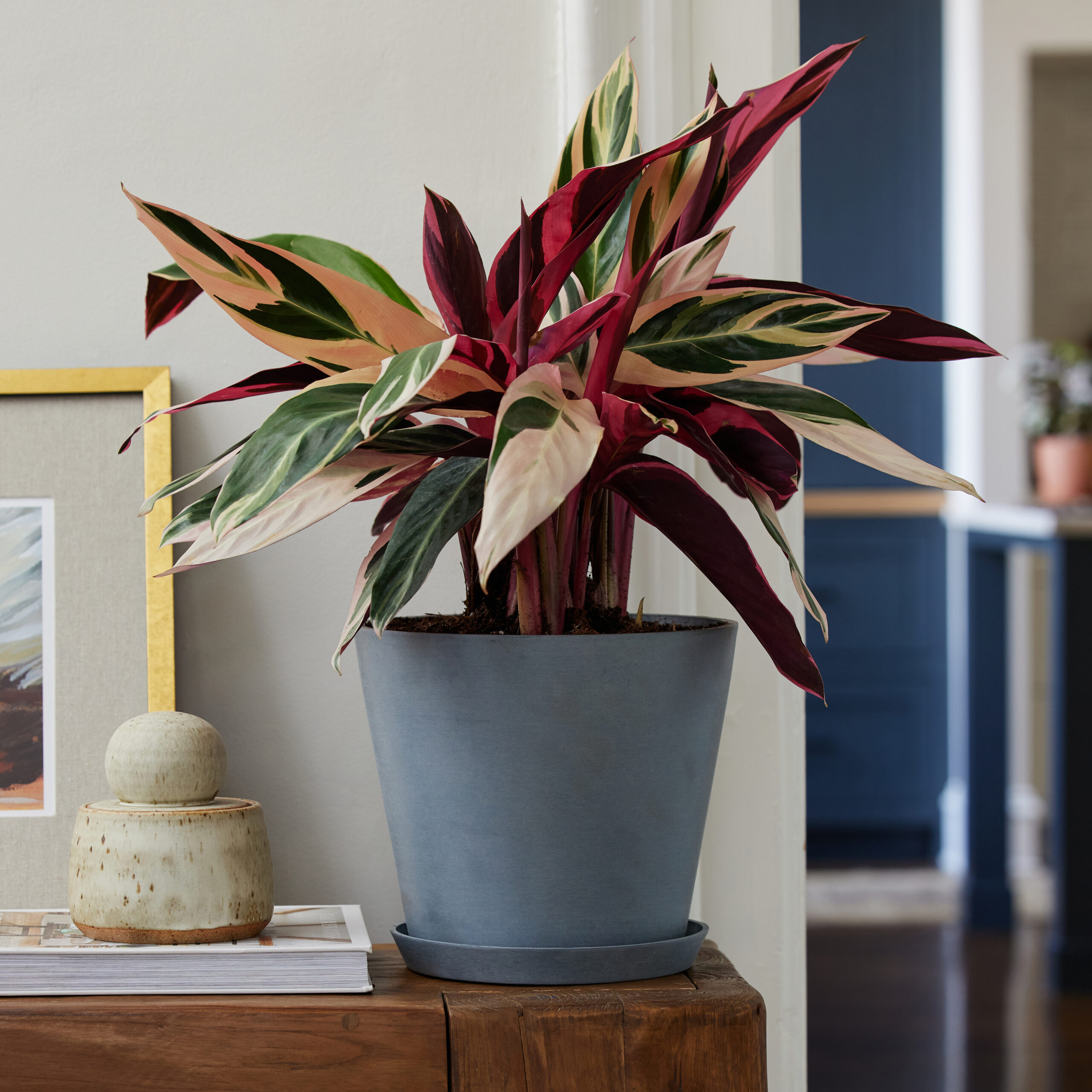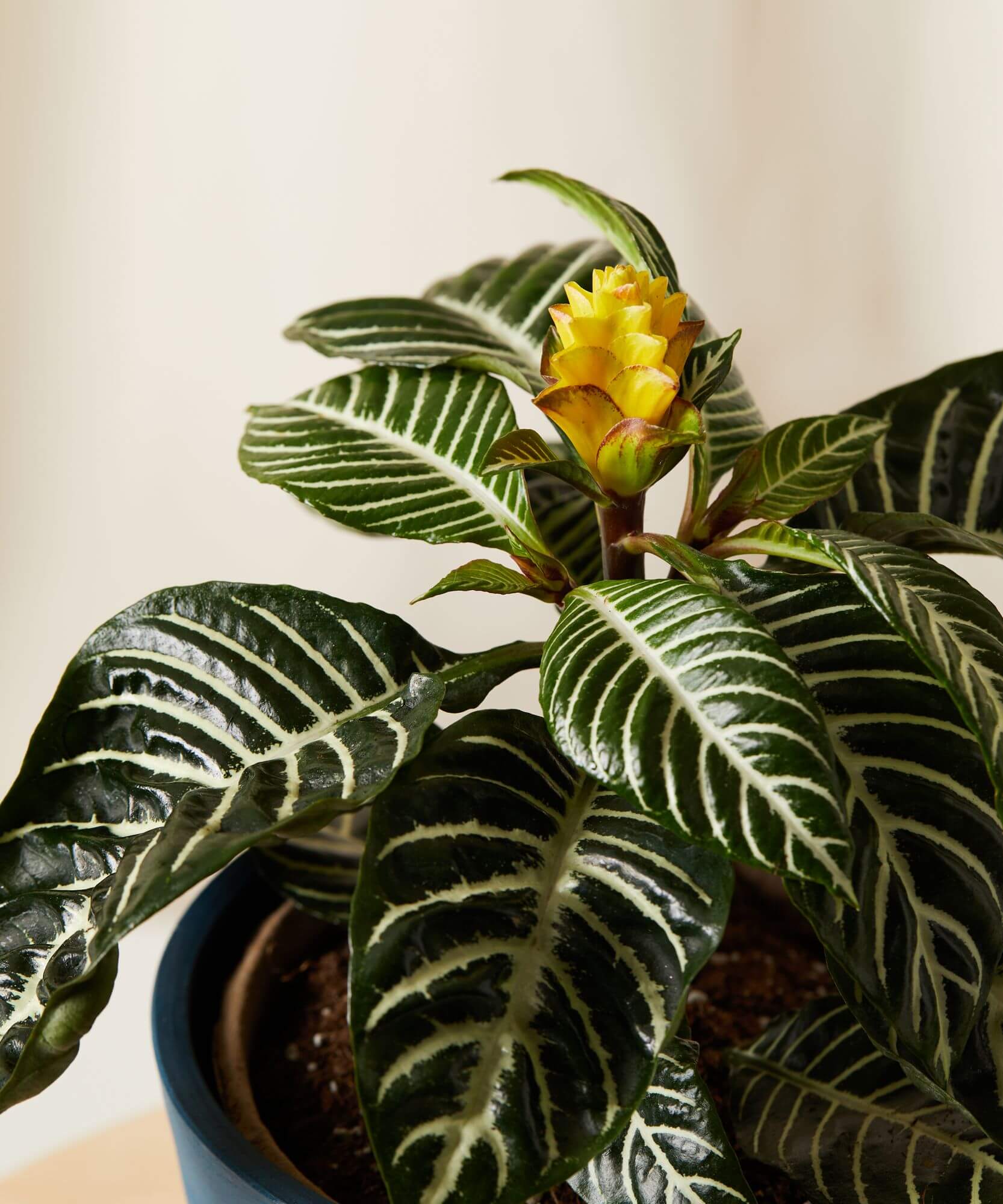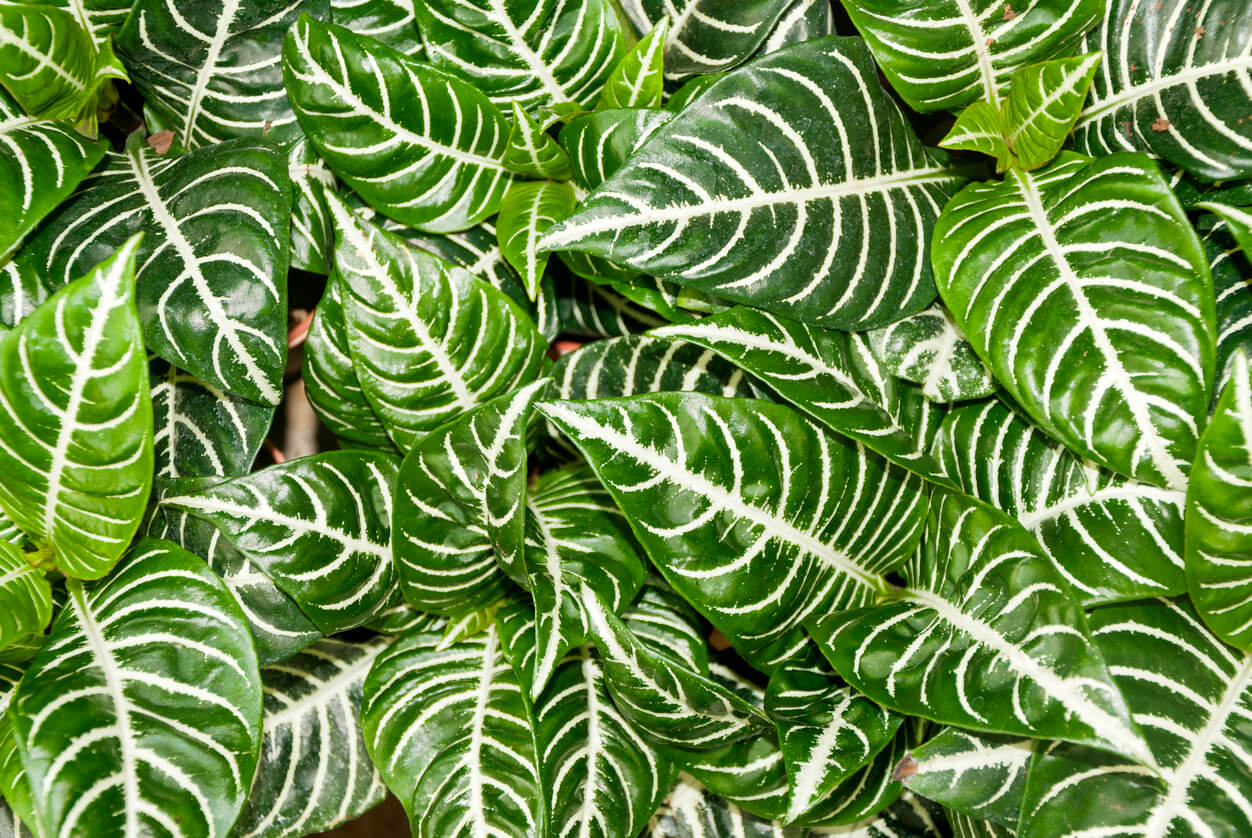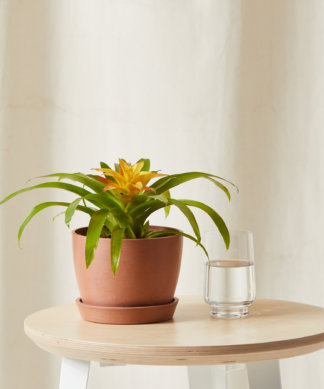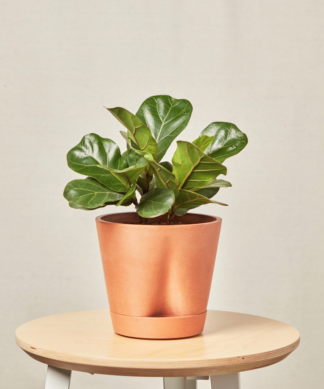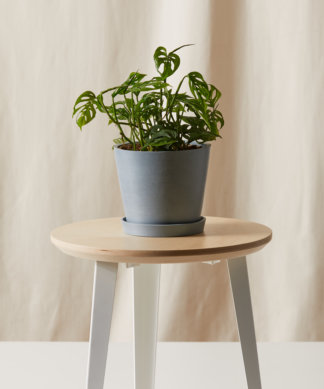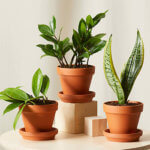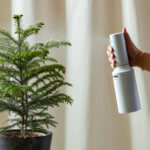How to care for your Zebra Plant
Use these instructions to care for a Zebra Plant. This guide will tell you how to water a Zebra Plant; its light, temperature, humidity preferences and any additional care it might need to help it grow.
Zebra Plant
Your Zebra Plant likes bright, indirect light since this native of the Amazon Forest is accustomed to the shade of bigger trees. Direct, prolonged sun exposure tends to scorch the leaves while inadequate lighting hinders blooming.
Consistently moist soil provides the best hydration for your Zebra Plant. However, there are some extra cautionary measures you’ll need to take to avoid overwatering. Using a water can with a narrow spout, water the soil every few weeks to where the liquid is pouring out of the drainage holes of the pot. Ideally, every part of the soil will be penetrated but not waterlogged. Also, your Zebra Plant prefers lukewarm water to cold because it mimics its natural habitat. And be careful to never pour water on the leaves.
Your Zebra Plant loves humidity, especially at high levels of 60-70%. Thus, you can place a humidifier in the same room or use a mister, but make sure the water is lukewarm.
Temperatures higher than 65℉ offer an optimal comfort level for your Zebra Plant. At the same time, your plant would not like fluctuations, so keeping its space at a consistent temperature would be the best option. And don’t forget to avoid placing your plant near drafty windows or doorways or under vents.
Every one to two weeks, you can fertilize your Zebra Plant when the soil is damp. An all-purpose fertilizer diluted at half-strength works best. To encourage blooming, you’ll want to fertilize during your plant’s peak time in the spring and early summer.
The Zebra Plant is non-toxic to pets and humans.
Though the zebra plant is considered non-toxic, the sap can irritate sensitive skin, so we recommend wearing gloves when handling this plant. Under the right conditions, your zebra plant may produce multiple flower spikes. The showy, bright yellow flowers are actually called bracts, a type of modified leaf structure, and can remain on the plant for up to 6 weeks. When the bracts start to brown, just cut the stem down as close to the base of the plant as possible. Your plant will go into a resting period after flowering, during which it will use less water. You should also pause fertilizing during this resting period until you see new leaf growth.
